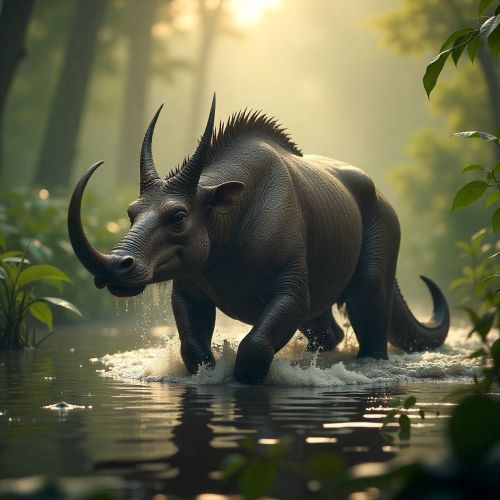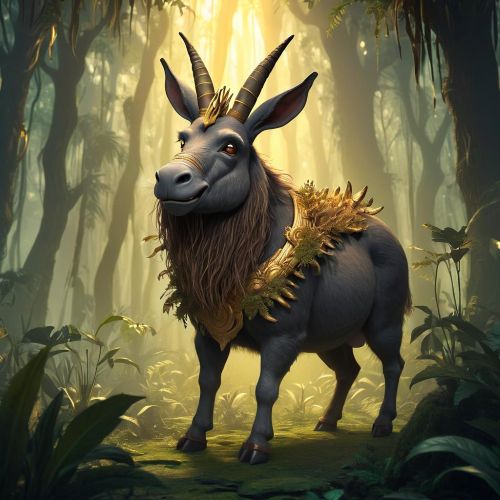Central African Animals
Central African Animals play a vital role in the mythology and folklore of the region, where the natural and spiritual worlds are deeply connected. The vast landscapes of Central Africa, from dense rainforests to great rivers and savannas, have always been home to a wide range of creatures that hold symbolic meaning. In traditional beliefs, animals are not seen as separate from humans but as companions, protectors, or messengers of the divine. Myths about Central African Animals reveal lessons about morality, survival, and the mysteries of life, reflecting the deep respect and reverence the people of the region have always shown toward the natural world.
One of the most prominent Central African Animals in mythology is the leopard, often associated with leadership, bravery, and spiritual authority. Leopards feature in myths as both protectors and fearsome adversaries, embodying the qualities of strength and wisdom. Another significant figure is the crocodile, symbolizing adaptability, hidden danger, and the connection to powerful water spirits. These animals were not only admired for their physical traits but also understood as carriers of supernatural power, guiding humans in their relationship with the spiritual and natural realms.
Birds also hold an important place among Central African Animals in mythology, often serving as messengers between the human world and the ancestors. The hornbill, for example, is a common figure in myths, symbolizing foresight, communication, and spiritual vision. Other birds, such as eagles, represent strength, clarity, and the ability to cross between earthly and divine spaces. Snakes, with their ability to shed skin, are associated with cycles of life, death, and rebirth, making them powerful symbols of transformation. These animals serve as reminders of the interconnectedness of existence and the constant balance of life forces.
Rituals and ceremonies often highlight the importance of Central African Animals, with masks, carvings, and dances incorporating animal symbols to invoke their powers. Shamans and spiritual leaders called upon animal spirits for guidance, healing, or protection, seeing them as essential mediators between humans and the spirit world. Through oral traditions, myths of Central African Animals have been passed down for generations, preserving the sacred relationship between people and nature. These stories not only entertained but also educated, ensuring that cultural values and ancestral wisdom continued to shape community life.
In modern times, Central African Animals still hold symbolic and cultural significance. Their imagery appears in contemporary art, literature, and spiritual practices, both within Africa and in global traditions influenced by the diaspora. They remain central to identity and cultural memory, serving as symbols of resilience, harmony, and ancestral connection. Whether as revered spirits, cultural icons, or guiding forces, Central African Animals continue to embody the enduring bond between humanity and the natural world. Their mythology remains a testament to the timeless respect for animals as sacred beings and the role they play in shaping the spiritual and cultural heritage of Central Africa.
Central African Animals play a vital role in the mythology and folklore of the region, where the natural and spiritual worlds are deeply connected. The vast landscapes of Central Africa, from dense rainforests to great rivers and savannas, have always been home to a wide range of creatures that hold symbolic meaning. In traditional beliefs, animals are not seen as separate from humans but as companions, protectors, or messengers of the divine. Myths about Central African Animals reveal lessons about morality, survival, and the mysteries of life, reflecting the deep respect and reverence the people of the region have always shown toward the natural world.
One of the most prominent Central African Animals in mythology is the leopard, often associated with leadership, bravery, and spiritual authority. Leopards feature in myths as both protectors and fearsome adversaries, embodying the qualities of strength and wisdom. Another significant figure is the crocodile, symbolizing adaptability, hidden danger, and the connection to powerful water spirits. These animals were not only admired for their physical traits but also understood as carriers of supernatural power, guiding humans in their relationship with the spiritual and natural realms.
Birds also hold an important place among Central African Animals in mythology, often serving as messengers between the human world and the ancestors. The hornbill, for example, is a common figure in myths, symbolizing foresight, communication, and spiritual vision. Other birds, such as eagles, represent strength, clarity, and the ability to cross between earthly and divine spaces. Snakes, with their ability to shed skin, are associated with cycles of life, death, and rebirth, making them powerful symbols of transformation. These animals serve as reminders of the interconnectedness of existence and the constant balance of life forces.
Rituals and ceremonies often highlight the importance of Central African Animals, with masks, carvings, and dances incorporating animal symbols to invoke their powers. Shamans and spiritual leaders called upon animal spirits for guidance, healing, or protection, seeing them as essential mediators between humans and the spirit world. Through oral traditions, myths of Central African Animals have been passed down for generations, preserving the sacred relationship between people and nature. These stories not only entertained but also educated, ensuring that cultural values and ancestral wisdom continued to shape community life.
In modern times, Central African Animals still hold symbolic and cultural significance. Their imagery appears in contemporary art, literature, and spiritual practices, both within Africa and in global traditions influenced by the diaspora. They remain central to identity and cultural memory, serving as symbols of resilience, harmony, and ancestral connection. Whether as revered spirits, cultural icons, or guiding forces, Central African Animals continue to embody the enduring bond between humanity and the natural world. Their mythology remains a testament to the timeless respect for animals as sacred beings and the role they play in shaping the spiritual and cultural heritage of Central Africa.



